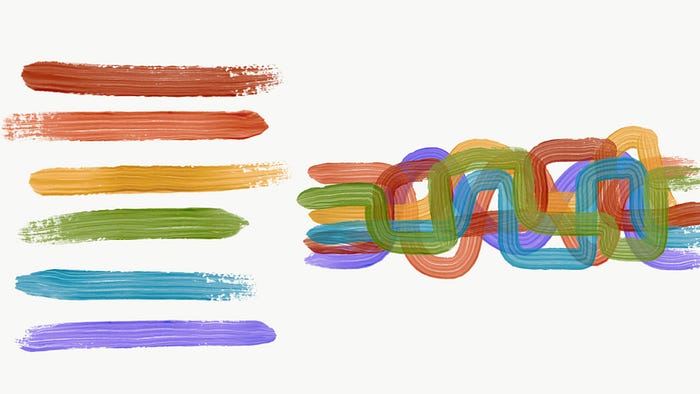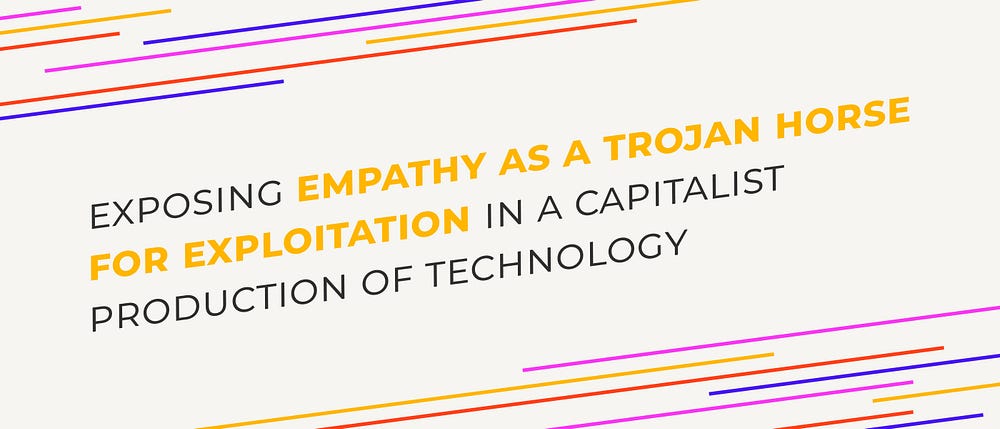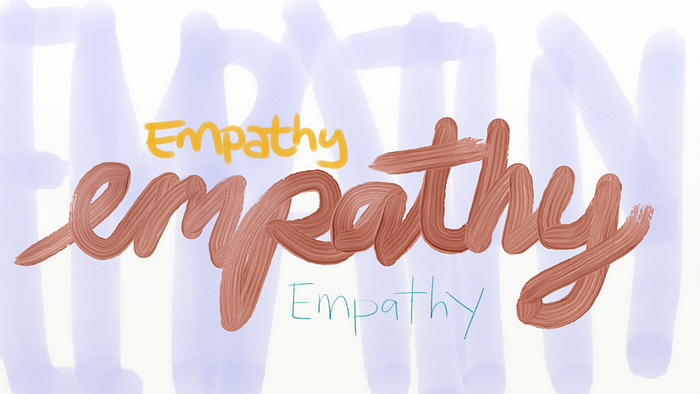Learning to be inquisitive: reflections from a beginner’s perspective
July 13, 2020
This article was originally published on Medium.
UX Research is as complex as the humans the discipline is trying to understand. It is a world of its own — particularly a young one. As much as other disciplines are evolving, UX Research continues to figure out what is and what isn’t, along with the questions that make up our core.
How do we scale the impact of research? Why are traditional methods irrelevant and inaccurate? How can empathy and the capitalist society we live in coexist? How do we influence research and empower people? How do we take ownership of our craft? When do we say yes? When do we say no? Where do we position ourselves alongside product and engineering teams within the organization?
These are some of the radical questions we tried to uncover and discuss on #UXRConfAnywhere, an online conference for researchers and research enthusiasts held on June 25–26, 2020 organized by UXR Collective. I was lucky enough to be selected as one of the three awardees on the first run of UXPH Scholarship, scoring me a free ticket. Now, I’ll share some of what I’ve learned addressing the questions above. Grab your coffee!
On the first day, there were five targeted tracks to acknowledge the participants’ varied experiences, interests, and professional goals:
🧱 Research Foundations — While almost all tracks are for seasoned professionals, this is dedicated to people who are breaking into the field and beginning their journey in research.
🏝️ UXR Team Of One — For all researchers acting as an individual contributor and a department at the same time. This resonated with me!
🚀 UXR Frontiers — This is for the explorers, a small group of enterprising researchers tackling challenges that most of us have never considered.
🧬 The Science Behind UXR — With academic knowledge from fields like neuroscience, cognitive psychology, anthropology, experienced researchers are invited to this track to strengthen their work.
🐺 Leadership In Research — This is for managers challenged to lead without precedent to guide them as more companies are scaling up research teams.
Keynotes on the second day were relevant to a broader audience, and since it touches both the abstract and the practice in its entirety, this is what stimulated me the most and made it at the top of what I want to highlight.
Before I proceed, I want to acknowledge all the speakers and their topics bearing practical learning from the research community and back, not relying on big names to make a change. While all the talks I attended and replayed were amazing, these are the thought-provoking yet humbling topics in my opinion that would shift the community as we progress.

Impactful UX research leverages observations and conversations. We make use of artifacts to reinforce gathered insights. We already know that doing research for the sake of it ends up being useless or worse, damaging. But what’s interesting is that even the frequently-used tools can be incomplete and inaccurate.
Personas perpetuate stereotypes
Working mainly with prisoners, Amber Westerholm & Carolina Pizatto stated the implications of using traditional personas that put people in boxes, especially for people society has an inherent bias on. They suggested removing all the heuristics that create these biases: gender, salaries, interests, and other demographics.
In order to revive personas, they gave a framework to build archetypes through what looked like a thematic analysis. They also suggested the use of “anchors” or metaphors that forces people to abandon preconceptions.
Research does not replicate how people use technology
A researcher coming from various industries, Leo Yeykelis presented Screenomics, a framework developed by Stanford University and others to collect and analyze people’s media consumption, switching behavior, and pace in between. One important thing that stood out in the study was just how little time is spent in any single application. People switch to different content, products, or websites, in a matter of seconds.

Leo’s analogy: Traditional research focuses on unicolor tasks while Screenomes show the actual multicolor thread of experiences
We really miss out on the reality of actual user behavior. Humans are messy and not average as much as stakeholders often try to make it seem that way.
For us to have effective insights into how people interact with technology in real life, we have to understand the variance of each individual’s thread of experience including what takes place before, during, and after the interface being tested.
Both touch on the main theme that generalizing and averaging people and their actions could lead us to misleading insights and would also make our products average. What we can do are the following:
🎨 Let participants work freely — we often follow prescribed workflows in confined settings that result in findings that are far from reality. We think of the tasks we try to test and observe in a linear fashion when in fact, they can be scattered throughout their day along with many other tasks.
🗂 Artifacts should be data-driven — I don’t mean that in a shallow sense. Both talks showed meticulous frameworks to improve the way we do research so we won’t miss out on the nuances of the people we’re designing for.
I encourage you to take time to browse through these links they talked about:
Your personas probably suck. Here’s how you can build them better. | Medium

As Sekai Ferai opened her talk, “I’m here to call bullshit on empathy in design and research, with love.” So even if we’ve heard this hundreds of times, I still want to tap into this.
It’s safe to say it was the most powerful talk in the conference that it had to be replayed on the second day’s keynote. It takes an incredible amount of courage and clarity to get her point across.
I believe that technology focused on the intention of being good is the most efficient vehicle for delivering goodness in this world. Similarly, I believe that research — quality, thoughtful research can accelerate that goodness further.

I know you hear it everywhere in the context of UX, but is there even a place for empathy when we’re all designing in return for something else?
We can be optimistic of what the future may hold, especially if we are some of the enablers of these technologies. But in order for us to be in that ideal state, we first have to talk about how “there is no empathy in a capitalist production of technology”.
Three deficiencies that contribute to the empathy impossibility
Absence of empathetic people: the fair-weathered empathy
There is a lack of diversity, empathetic fitness (ability to be explicitly open and clear-minded), and empathetic endurance (ability to stay engaged in empathy long enough for it to matter to the person you empathize with) which researchers have to realize within themselves. We should be self-aware in all opportunities, not just inside the interview room.
Absence of empathetic process: the dichotomy of the savage & the civilized
The traditional dynamic of the interview process clearly states how there’s little empathy even when you’re trying to get to know the participant (the savage) especially since you are the one on the more structured side (the civilized). It’s the relationship that creates the opportunity for empathy.
Absence of empathetic environment: a sympathetic cover of exploitation
When you look around the technologies we work for and use, you have to think that some of these seek empathy as an effort to exploit someone’s experience so they could extract value that is disproportionately handed off to the profiteers.
It’s also important to acknowledge the symmetry that while researchers have so much power in the room, they have too little organizational power to be able to drive empathetic outcomes.
All these are difficult to admit, and we may often have fallen into this trap where we have mindlessly conflated empathy and User Experience. But now that we are aware, it’s up to us how we go about moving forward.

There is this cycle of questions I came across on the future of UX Research itself and how we position ourselves in the organizations we work for. How do we evangelize research across our organizations?…without implying that we can do everything?…and at the same time still providing value and impact even if we had to give away responsibilities?
I can’t quote Molly Stevens enough on how researchers need to learn not to be complacent about the current treatment organizations give us. She told the story of how we became recognized as valuable, from saying yes to everything because of the high demand yet low ratio to other teams in the product development cycle, to how we’re being spread thin and so the need to educate others comes up.
Behzod Sirjani argues that we are more than the artifacts we produce. Building a culture of curiosity in our organizations is more important of a contribution than our research reports. It is only through educating, enabling, and empowering our colleagues that we are able to foster advocates.
Your job is not to have all the answers, but to help your team and company make better decisions
Molly challenges researchers to recognize the impact of teaching other disciplines so as not to make research “cheap and easy to learn”.
No one thinks, “Oh, Data Science. I’m sure I could learn how to do that in a couple of hours.” There’s no assumption of what they do as easy…as easy as talking to people which is what I’ve heard our jobs are described as.
Escape Velocity: Finding Our Path in the Next Decade | Medium
These contrasting yet complementing points invite us to think critically and make the shifts we need to do, but until we come together and decide the course of action, we have to:
🎖 Respect and celebrate the entire discipline — researchers have taken immense years of education and experience to be what they are today. We have to make people understand the complexity and value of what they do so they would know better than to frame them as mere people-talkers. Although this applies to designers or “pixel-pushers”.
🎯 Be specific in defining roles — we have to clearly articulate what is unique in our specialties and confidently decide what activities will be and will not be delegated to other functions so we know, when there is overall maturity in our organizations, how to better educate, enable, and empower.
There is so much to unlearn and discover! There is the need to think critically, to come up with provocative ideas on one hand and challenge what has been laid out on the other, to know what information to accept and what methods not to conform to. It is in these contrasting experiences that we grow.
You could be a designer, a researcher, or whatever you or your company label what you do, but if there’s a key takeaway to all these takeaways, it is to be on the forefront, have an active role in the organizations you work for or the communities you serve, and challenge the norm. You will not only know how to do better processes that will result in better outcomes, you can also better serve the people you are doing work for. I hope this has sparked a fire in you to become more self-aware and be more intentional in your work.
If you’re still with me, thank you for reading! I want to end this with an excerpt of my application essay that got me here, to serve as my pledge:
I see this scholarship as carrying a responsibility to help propel UX Research and encourage Filipinos to explore and implement the practice, as well as open the floor for critical yet enjoyable discussions just like what we do on design tools and laws. There’s only a number of local UX researchers in the sea of UX designers, and even that statement is not data-driven. It’s only a hunch, but I think we can all agree that we need to drive this forward to the community to be able to make more informed design decisions regardless of the products and industries we work for. We have to remind everyone that UX is a spectrum comprised of practices other than Design.
Thank you so much!
There are so many general UX conferences out there and so few focused on UX Research. Thank you UXR Collective for making the conference accessible and raising the standard of remote conferences; your production was wild! You have been an inspiration to our community to push UX Research further.
Thank you to Aldrich, Chi, and Matthew for guiding us throughout the short journey, and taking your time to patiently read and refine what would be a messy write-up.
Most of all, my heartfelt thanks to the entire UXPH team for putting me alongside Pauline and Ysabel on a “maiden voyage” of UXPH Scholarship! This has been a great kick-off!
Get involved in the UXPH community!
📺 Read more stories here on Medium or watch our videos on YouTube
📟 Connect with other UX peeps on our Facebook group
📰 Catch our updates on Facebook, Twitter, Instagram, and LinkedIn
🧩 Help out in organizing UXPH initiatives by volunteering
Back to blogs